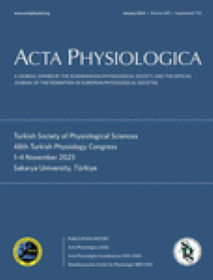Comparison of Phasic Store-Operated Calcium Entry in Rat Slow- and Fast-Twitch Muscle Fibers
Abstract
Aim
This study investigates the activation and regulation of phasic store-operated calcium entry (pSOCE) in fast- and slow-twitch skeletal muscle fibers. Specifically, we aimed to enhance the sensitivity of pSOCE detection in slow-twitch fibers by optimizing ionic conditions and to compare the physiological relevance of pSOCE between fiber types.
Methods
We employed mechanically skinned fast-twitch extensor digitorum longus (EDL) muscle fibers loaded with spectrally distinct Ca2+-sensitive dyes to simultaneously measure action potential-induced sarcoplasmic reticulum Ca2+ release and t-tubular system Ca2+ dynamics with millisecond resolution. Experimental conditions were optimized by reducing cytosolic Mg2+ and EGTA buffering to enhance Ca2+ release in slow-twitch soleus fibers. Confocal microscopy was used to track t-tubular system Ca2+ depletion and reuptake during electric field stimulation.
Results
Skinned soleus fibers exhibited ~8-fold lower Ca2+ release per action potential compared to EDL fibers, yet pSOCE amplitudes were comparable. Reducing Mg2+ and EGTA levels increased Ca2+ release and left pSOCE kinetics in EDL fibers unaltered, but enabled pSOCE measurements in soleus fibers. While pSOCE in EDL fibers followed a linear dependence on the ambient Ca2+ concentration in the t-tubular system, such a relationship was violated in soleus fibers.
Conclusion
These findings reveal a novel, fiber-type-specific difference in pSOCE regulation. When compared to EDL fibers, soleus fibers exhibited a higher sensitivity to SOCE activation despite releasing less Ca2+ from the sarcoplasmic reticulum upon an action potential. These differences may allow soleus fibers to sustain Ca2+ homeostasis more effectively, be more resilient against disruptions in Ca2+ handling, and entail protection against disease states.


 求助内容:
求助内容: 应助结果提醒方式:
应助结果提醒方式:


